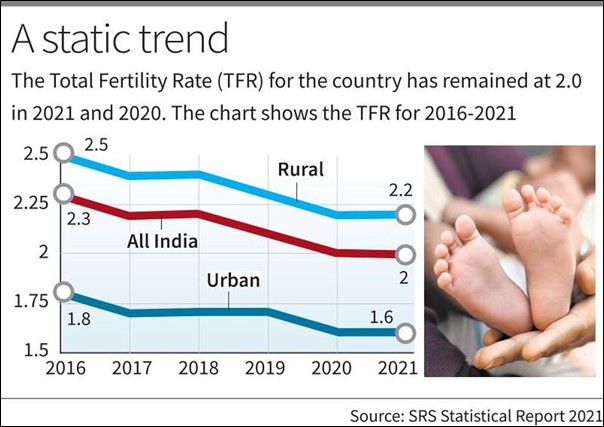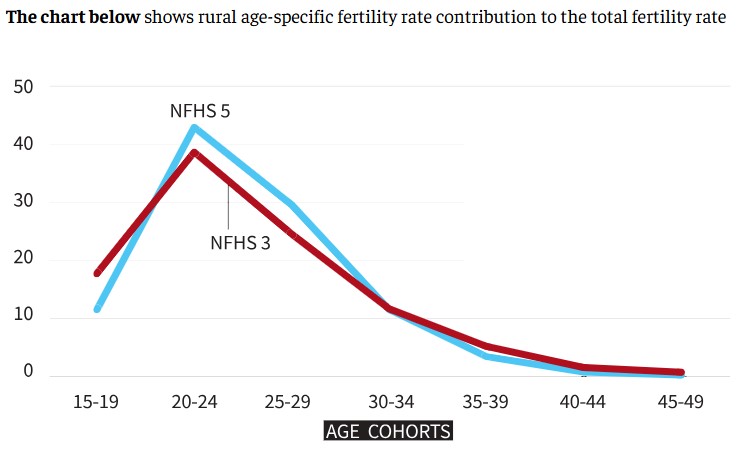7667766266
enquiry@shankarias.in
Mains: GS I – Indian society
Why in News?
Recently, there is a large gap between real and calculated Total Fertility Rate (TFR) is particularly relevant in a developing country such as India
What is the recent UN report?
What is the perceived meaning of TFR?
A cohort is a group of people who share a common characteristic, like age or birth year.
What are the limitations of TFR calculation?


What lies ahead?
Reference
The Hindu| Total Fertility Rate of India